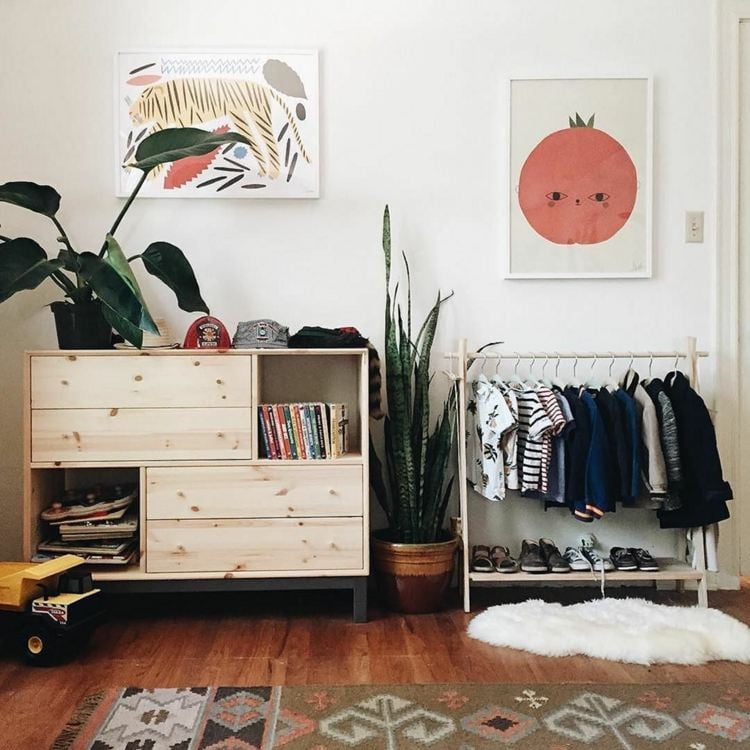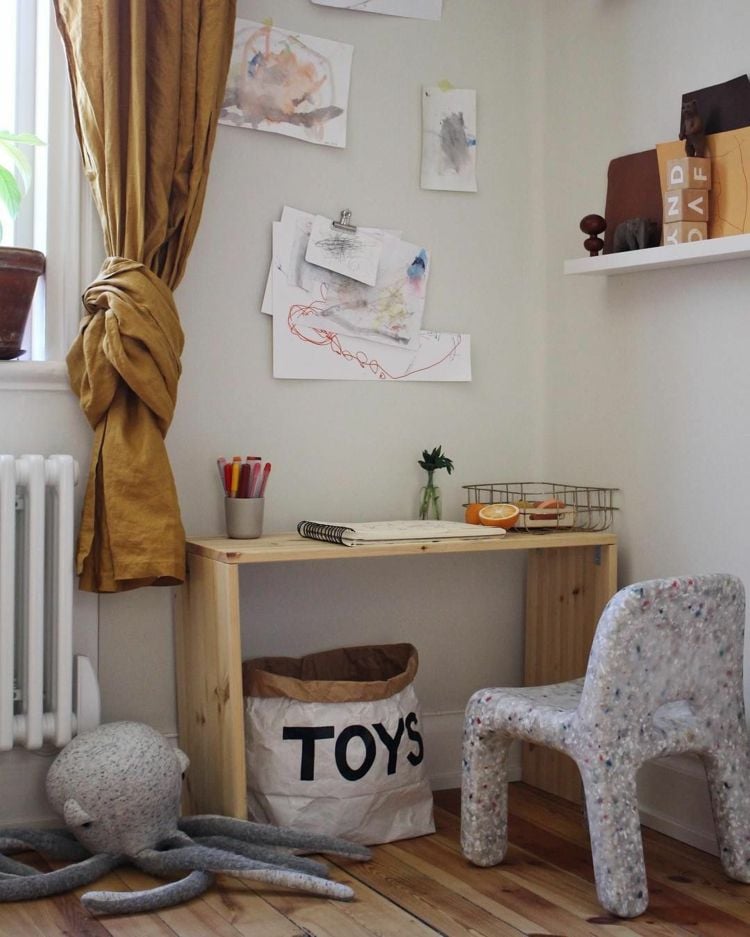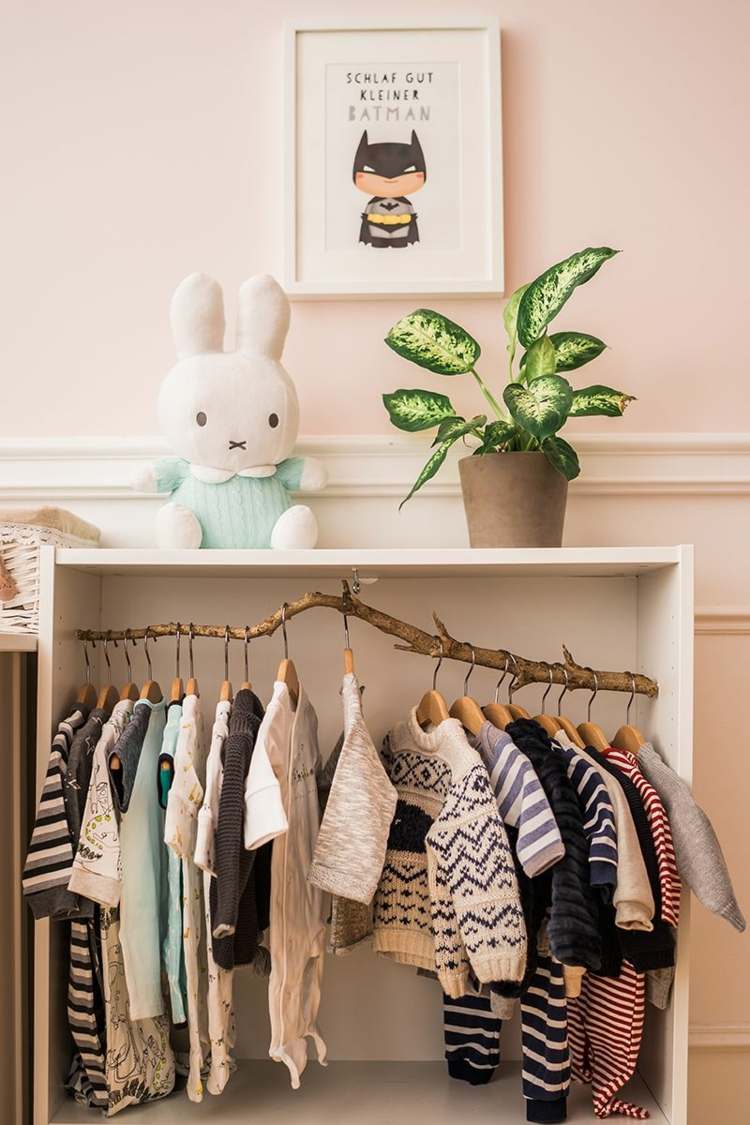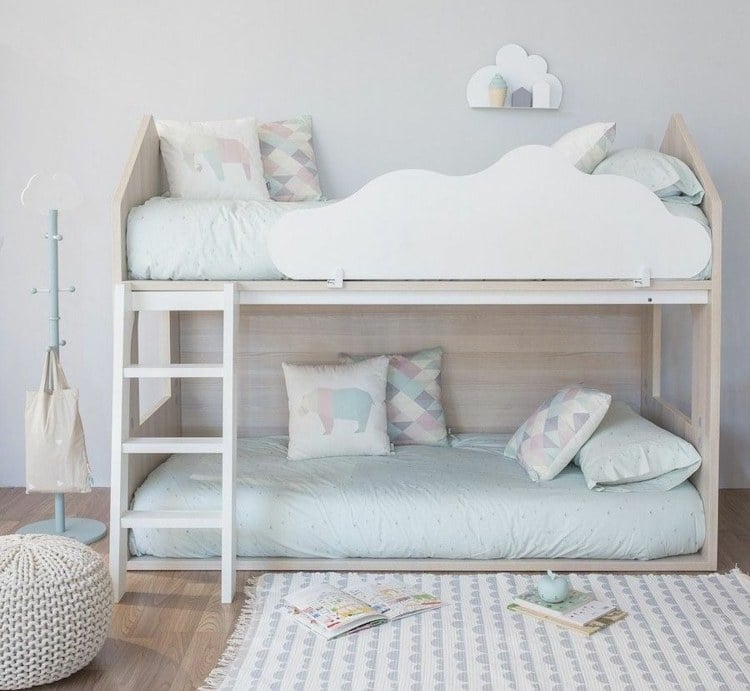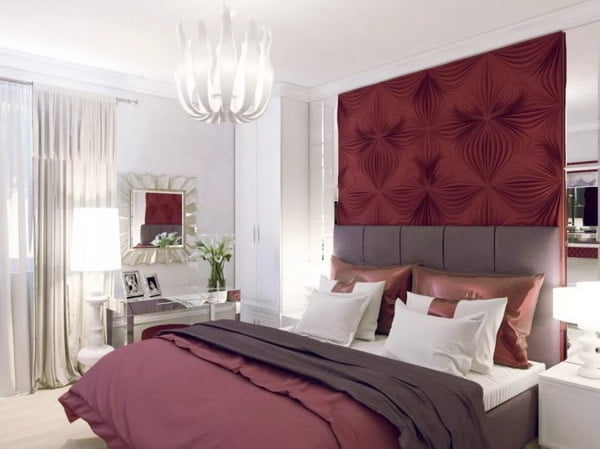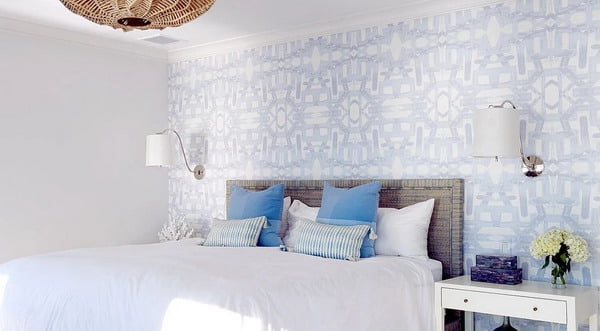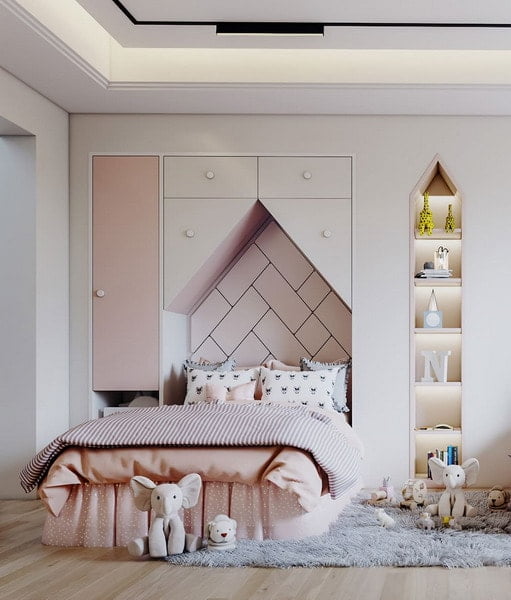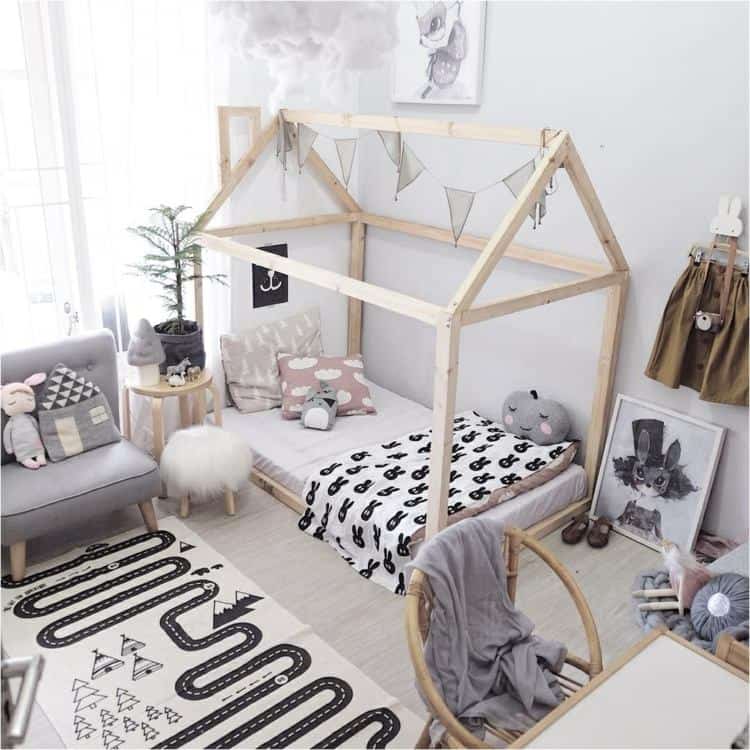
You have probably heard the term “Montessori education”, which was developed by Maria Montessori. But if you don’t know what to do with it yet, it’s generally easy to explain. It’s about using children’s natural curiosity and their desire for development and knowledge to their advantage and in this way achieving a certain degree of independence in the little ones at an early age. Of course, this doesn’t mean that you suddenly abandon the child to its fate. Instead, do little things to help him master some everyday activities independently. This gives them the opportunity to get dressed independently in the morning if the clothes are within easy reach of the children. If a toothbrush and towel are within reach, the little ones can go and brush their teeth themselves. Children also learn to create order after playing if the right foundations have been created. Many parents who appeal to these methods decide to set up a Montessori children’s room.
Montessori children’s room ideas and tips
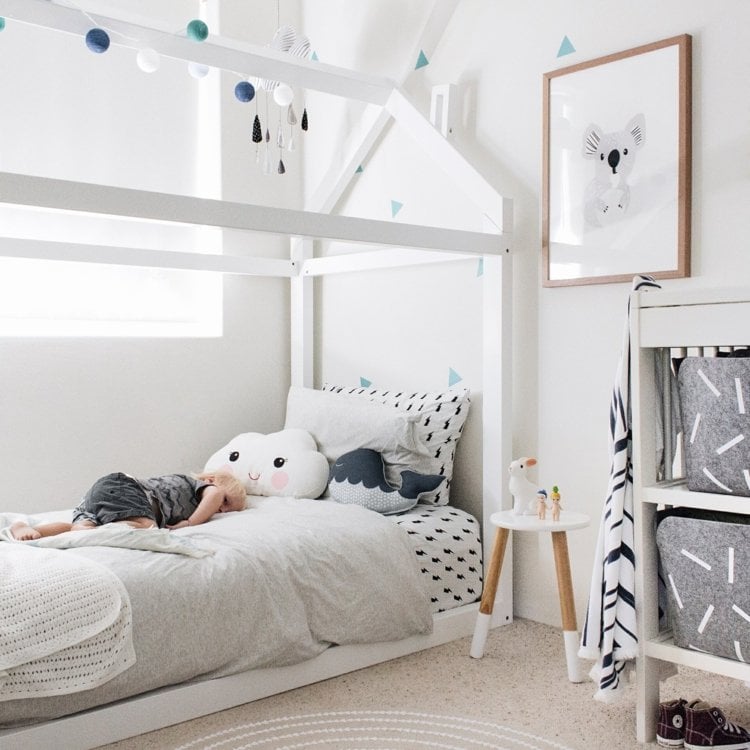
If we have piqued your interest, below you will not only find a few tips on how to set it up, but will also point out which bad habits of today you should avoid. And we are sure that you will find some of the furnishing tips very logical and interesting and will want to implement them immediately. The attached Montessori pictures for children’s rooms serve as inspiration and you are guaranteed to fall in love with them. And great news is that remodeling or redecorating the room with nursery furniture doesn’t necessarily involve big expenses. Children’s rooms can also be designed according to Montessori with inexpensive new purchases and existing pieces of furniture. By the way, you don’t have to implement all the tips straight away. Decide for yourself which of the suggestions you like and will find useful. Whether for toddlers, schoolchildren or babies, for girls or boys, you are sure to find the right inspiration for every age group.
Set everything up at child height
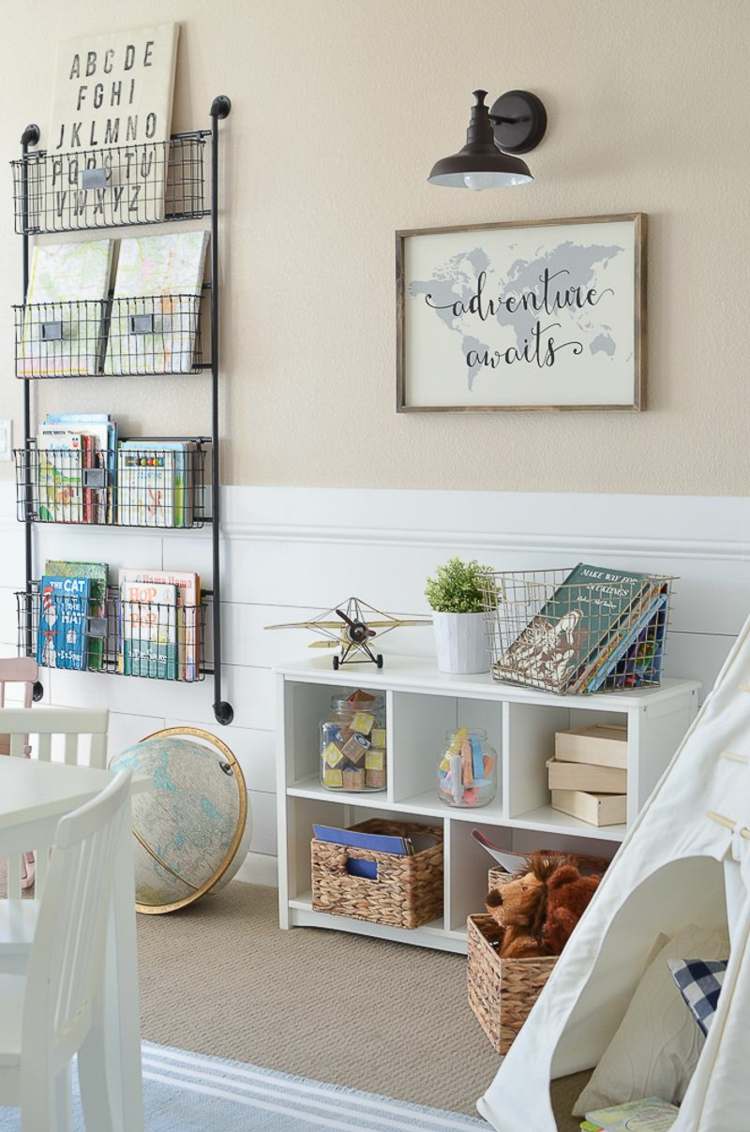
An important prerequisite for your child to be able to dress themselves, choose their own toys and put them away again, choose any book to read and put them away again and the like is of course that they can reach all of these things and areas without any problems. It is therefore recommended that at least the majority of the furniture is cut or attached to a child-friendly height. Of course, this doesn’t mean that the higher areas of the walls have to remain bare and higher wardrobes are forbidden. Just try to place what will be used most often within easy reach in the room. If, for example, the wardrobe is built relatively high, you can compensate by setting the clothes rail a little lower and hanging clothes there that are needed for the respective season. In summer the winter clothes are not needed and vice versa, so these can be in the upper section. If the season changes, simply swap out the clothes.
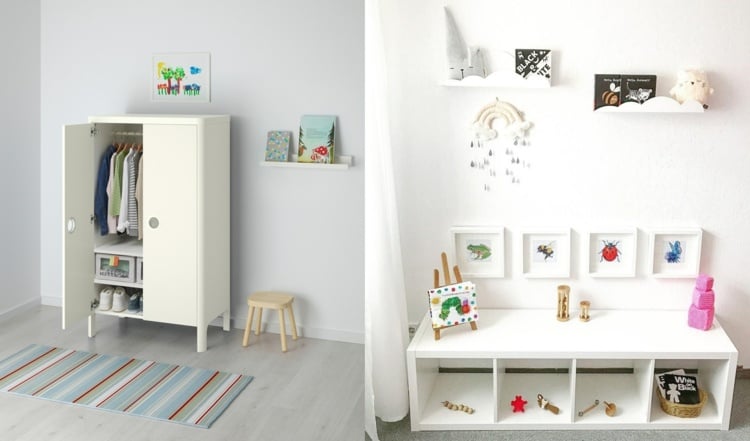
The shelf in the Montessori children’s room should also be as low as possible. Horizontal shelves are particularly suitable for this purpose. Most room dividers in the form of shelves are designed relatively low and can be used for the Montessori children’s room. It is best to place books in such a way that it is not the spine that is visible, as is usual, but rather the book cover. This makes it easier for the children to have an overview and choose from the different books. Photo strips are particularly suitable for this and can be attached at any height. But standing shelves with a support bar in front of each board can also be used. School books can also be set up in this way if the children’s room is intended for a school child. You can also quickly find suitable pieces of furniture at Ikea.
Set up the room with open shelves
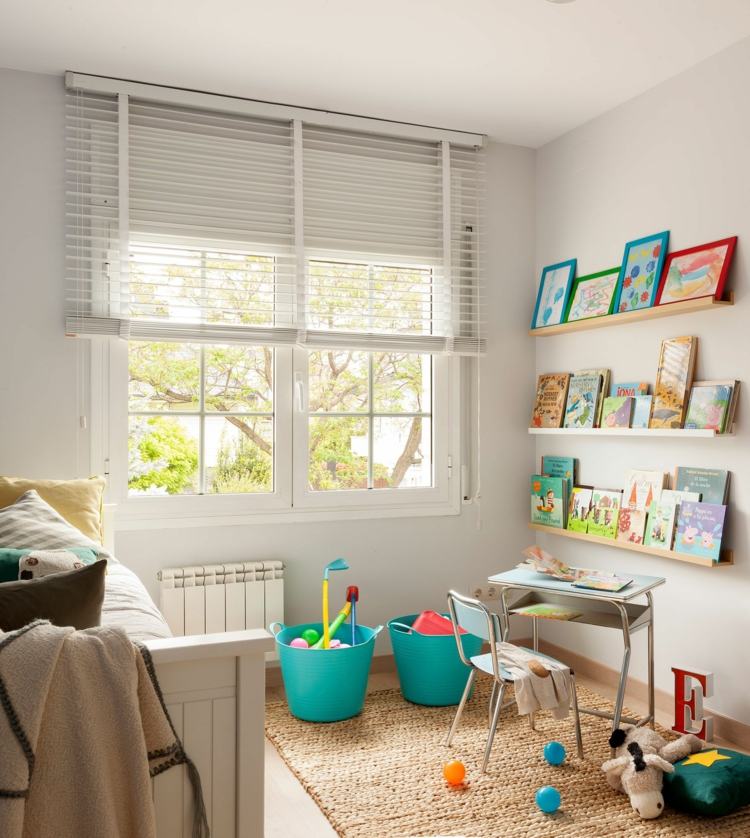
The shelves already mentioned, as well as boxes or baskets or baskets for storing toys and other things, are best left open in the room. This also helps the children to keep an overview and quickly find what they are looking for. If you still want to store crates or boxes on shelves or under the bed, simply label them with symbols that identify the contents. For example, if art supplies are stored in the box, a colored pencil or brush can be depicted on the front of the box. If there are toy cars in it, then logically a car goes on top of the box and so on.
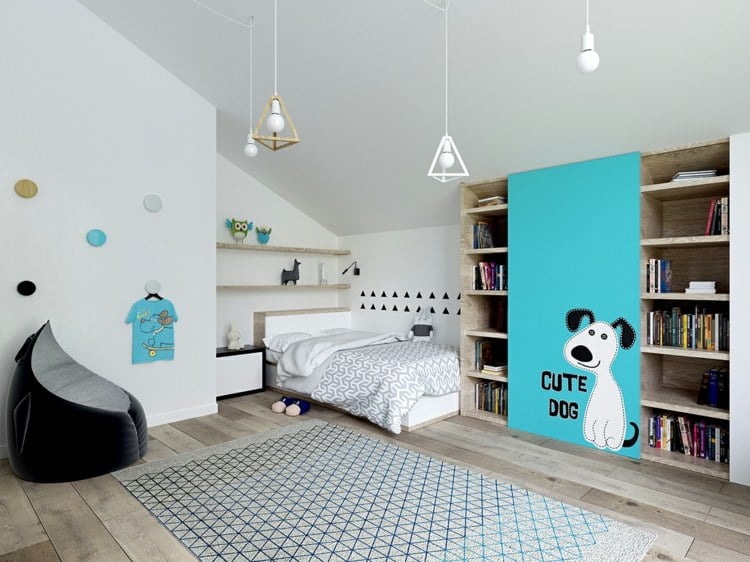
On the shelves you can display the toys like a collection. This way you can easily overview them and find the toy you want right away and don’t have to rummage through boxes or drawers. This also makes the toys much more attractive. Trays are also great for sorting toys and can be placed on a shelf. When choosing a tray, pay attention to size and weight. Little ones should not experience any difficulty lifting. On the topic of “presenting openly” we would also like to give another useful tip that specifically concerns puzzles. Your children are guaranteed to be more interested in putting together a puzzle if it is not finished in advance but presented in its individual pieces. For example, you place the base with the motif on the shelf, while the individual parts are placed in a small wooden bowl next to it. So this popular puzzle game is ready to be arranged. Try it out. Your daughter or son will certainly immediately show a new interest in their puzzles.
Divide rooms into areas
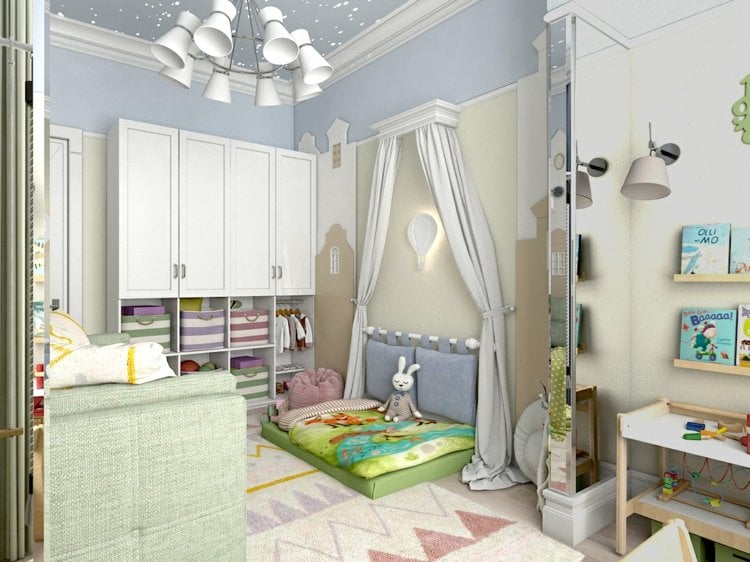
If you’re wondering what this means – it’s just about separating the rest area from the play area. This should not only be based on the furniture and accessories used, such as decorations, textiles and toys. A certain visual limit can also be created using colors. Now you might think that this is hardly possible in a small room, but you would be wrong. It doesn’t have to be large areas. You can also use the four corners of the room to adhere to this rule of the Montessori children’s room. And here are the individual areas that can be designed and created in both large and small children’s rooms:
The sleeping area
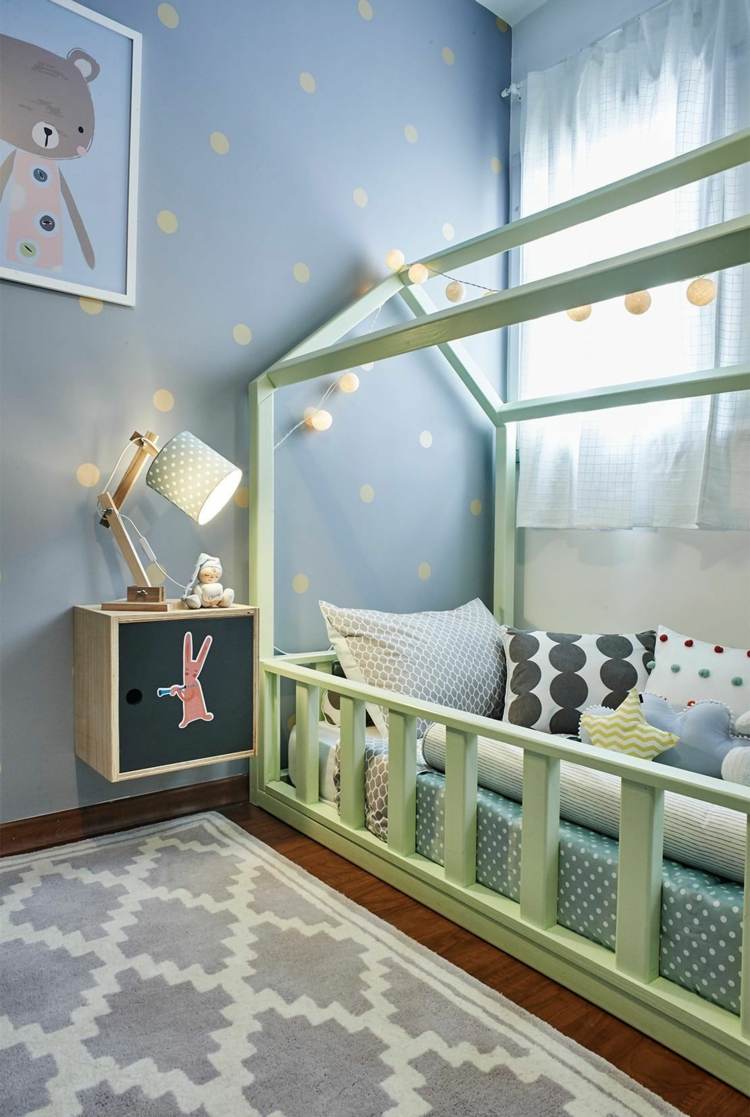
As the name suggests, this is the area used for sleeping. Here is the bed and possibly a nightstand with a bedside lamp and the like. Calm colors, minimalist decoration (if there is any need to decorate at all) are an advantage here and putting up toys should also be avoided. It’s about creating a calm, relaxing atmosphere. Your child should know, “This is where I sleep and rest.” The sleeping area is, so to speak, the equivalent of the adult bedroom. Things should be quiet there too. And since children usually don’t have multiple rooms at their disposal, creating a sleeping area is a good alternative. However, sometimes you also have the option of offering the child a second room. Then one of them can be used for resting, while the other serves as a playroom for playing.
The relaxation area
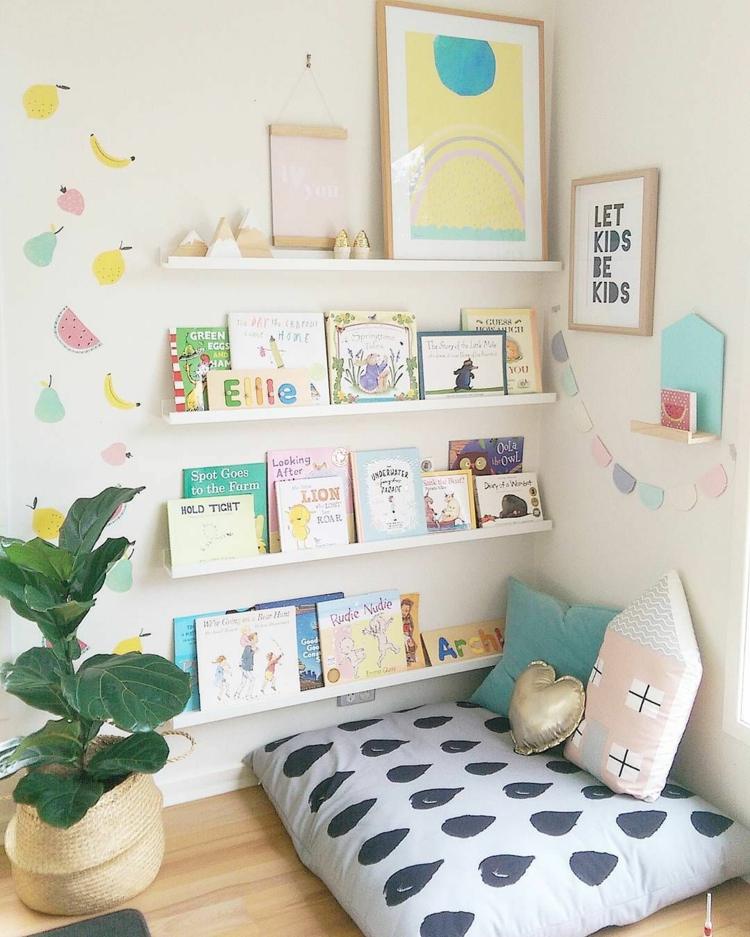
The relaxation area can merge with the sleeping area, but it can also represent a separate area that is separated from the rest by room dividers or similar. The difference to the sleeping area is that you don’t sleep here, but “just” rest (if your child nods off during the activities there, that’s of course not a problem. The relaxation area is intended for relaxing activities during the day. So you can read a book there Such a reading corner is very popular for children’s rooms and can be designed to be particularly cozy and cozy. Small tents in which the little ones can retreat are very popular. But also simple seat cushions, a pouf or a thick carpet, a cuddly blanket, etc Cuddly toys and the like are great. A painting and drawing table also fits in the relaxation area. Calm colors are also preferred here.
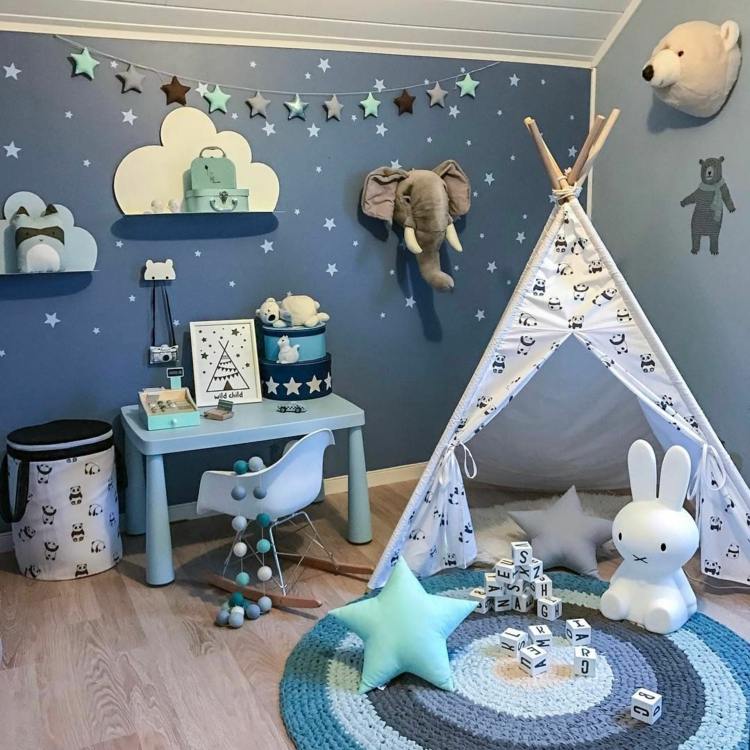
The shelves for the books should also be located in this area so that they are within easy reach. For example, choose a corner of the room. This can also be located directly next to the bed. You then mount photo bars there and put the books up. This way you save space on the floor and use the height of the room. We would like to remind you once again that the photo bars should not be installed too high.
The play area
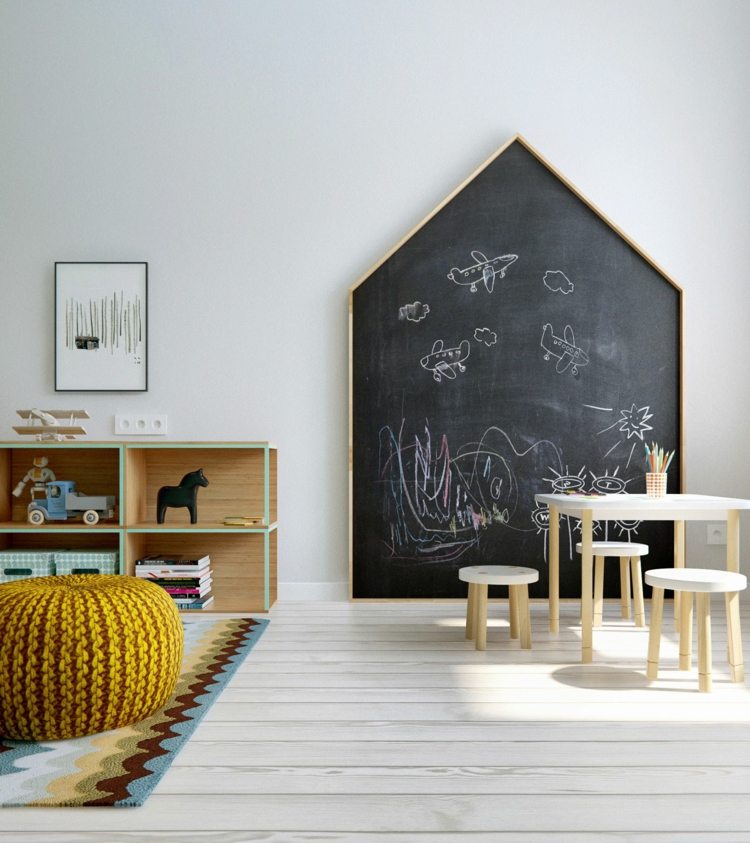
Here too, the name already reveals what is meant. Here you can play and frolic as you please. A children’s table with chairs (or alternatively a small desk) can mark the boundary between relaxation and play areas, as it can be used both for playing and, as mentioned above, for quiet painting. This is also the area for the open shelves where the toys are stored. This should also be as cross-gender as possible and stimulate the imagination. Wooden building blocks, but also plug-in games or puzzles are ideal for the Montessori children’s room. Other games that educate in a certain way also do well. How about, for example, an abacus? Not only is it usually beautifully colorful and decorative, but it can also help your children take their first steps into the world of mathematics by visually representing calculation problems.
Low sleeping area
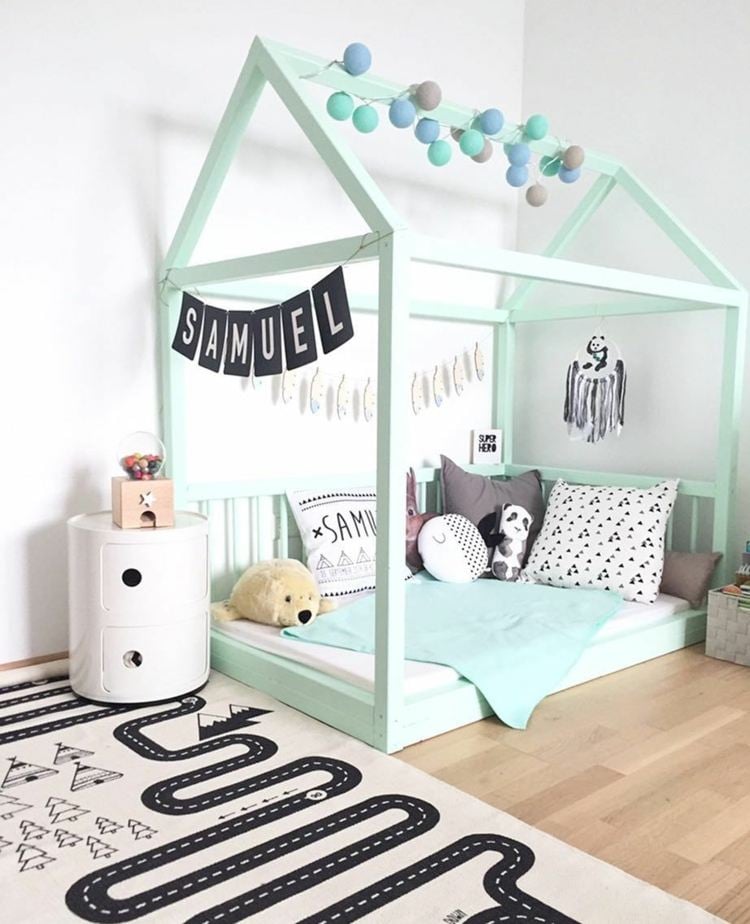
If you often look for furnishing ideas for the children’s room, you have probably already come across variants like the one in the picture above. And be honest, weren’t you immediately enthusiastic about the idea and found it particularly cozy and romantic? This refers to the low beds, which often only consist of a mattress. Did you think that these were Montessori children’s rooms? The variants make the bed particularly easy to access for our little bullies. A canopy, some cuddly pillows, plush toys and other things that increase comfort are not only allowed but encouraged.
General design
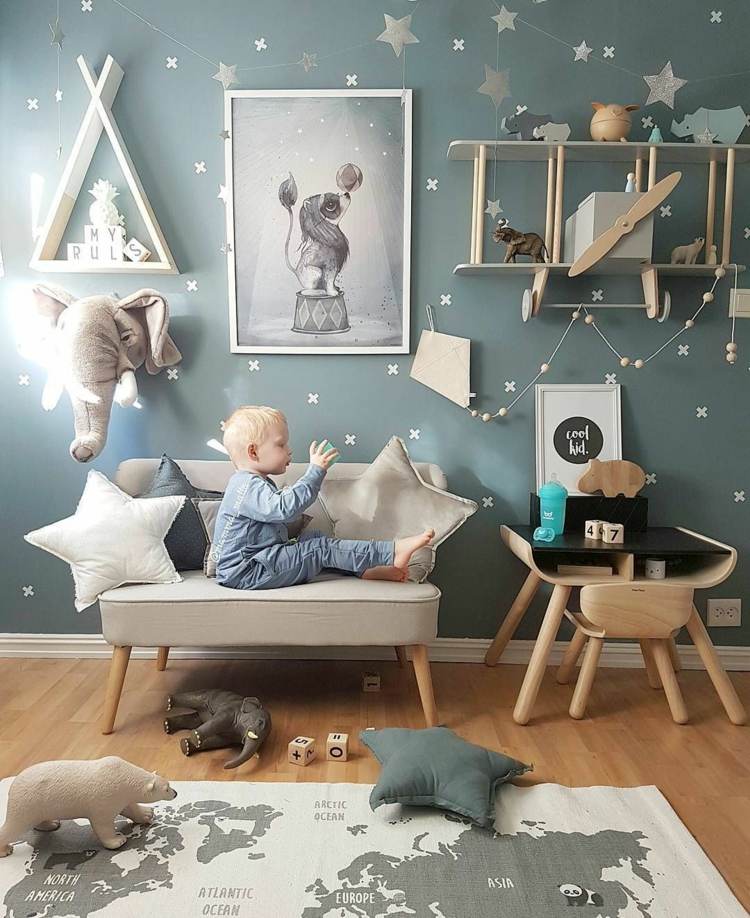
As already mentioned, an interior design in mostly calm colors is preferable, but some bolder shades are also allowed in the play area. The same applies to the decoration in the Montessori children’s room. Less abstract and a small number of colors. In principle, the children’s toys on the open shelves serve as decoration. In addition, a beautiful ceiling light, hanging decorations and beautiful curtains, carpets and other textiles can create the desired atmosphere. All of this preferably in subtle colors. But if your child insists on brighter colors, then of course they can be used too. Natural materials are of great importance, not only for the furnishings, but also for the games. This is how our little ones get to know and love nature better. So a few pine cones, chestnuts, leaves and the like are a welcome thing. A large mirror is also a very good idea in a children’s room for the baby, as they like to watch themselves and their movements.
Avoid sensory overload by using small amounts of toys and decorations
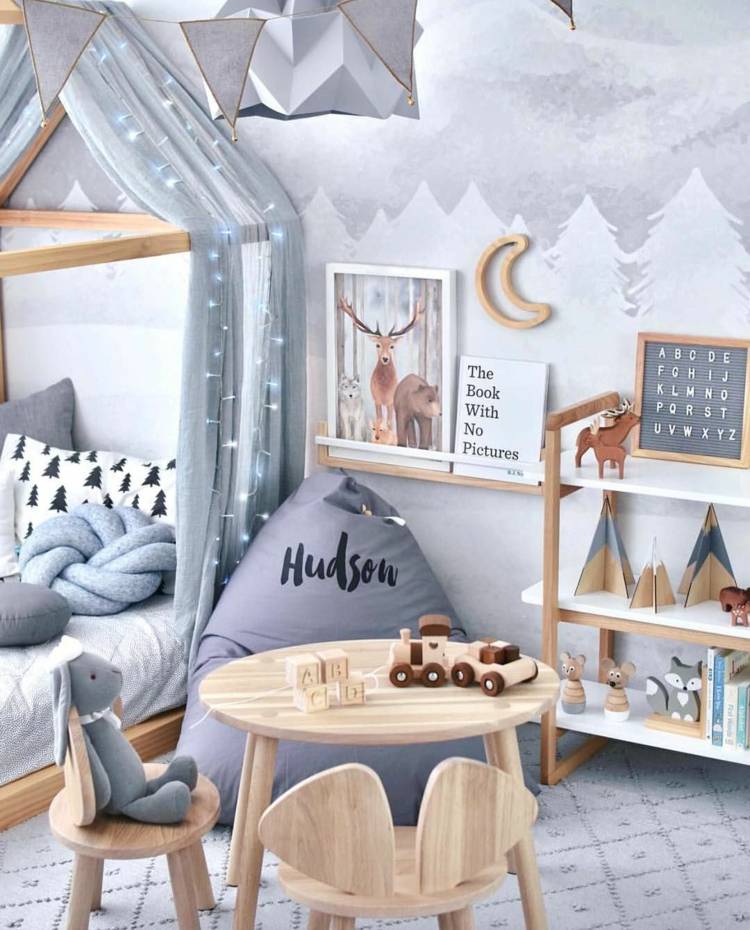
But calm is also a key word for the play area and, more precisely, this does not mean that there are no exciting toys in it. However, there should be a manageable order and an overstimulation, which can happen very quickly with children, should be avoided. Lots of toys are not only annoying, but even taboo. Now you probably know the following problem only too well: You yourself avoid constantly surprising and showering your child with new toys because you know that this is not good. But then relatives and friends come and unconsciously do exactly that, even though they actually only want to do good. And honestly, who isn’t happy to see the little one’s smiling face?
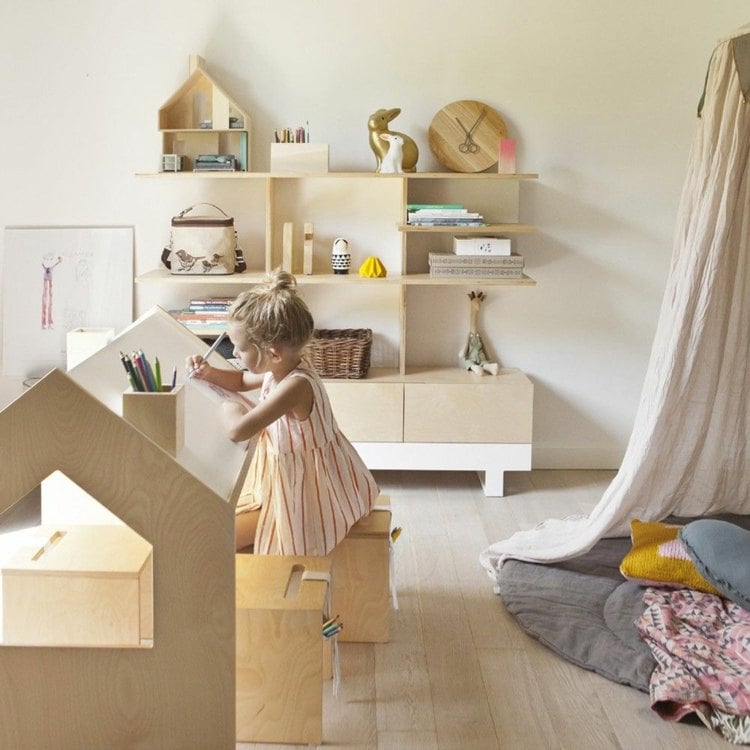
A good solution to this “problem” is theme weeks, which are intended to sort out toys without throwing them away. Because it’s really too bad for that. But what exactly does this theme week represent? First, pack most of the toys into boxes and put them away. Then just set a theme each week (e.g. fire department, Lego, zoo, farm, etc.) and get the toys that go with it. After the child has played with it for a week and is probably starting to lose interest in it, a new topic is chosen.
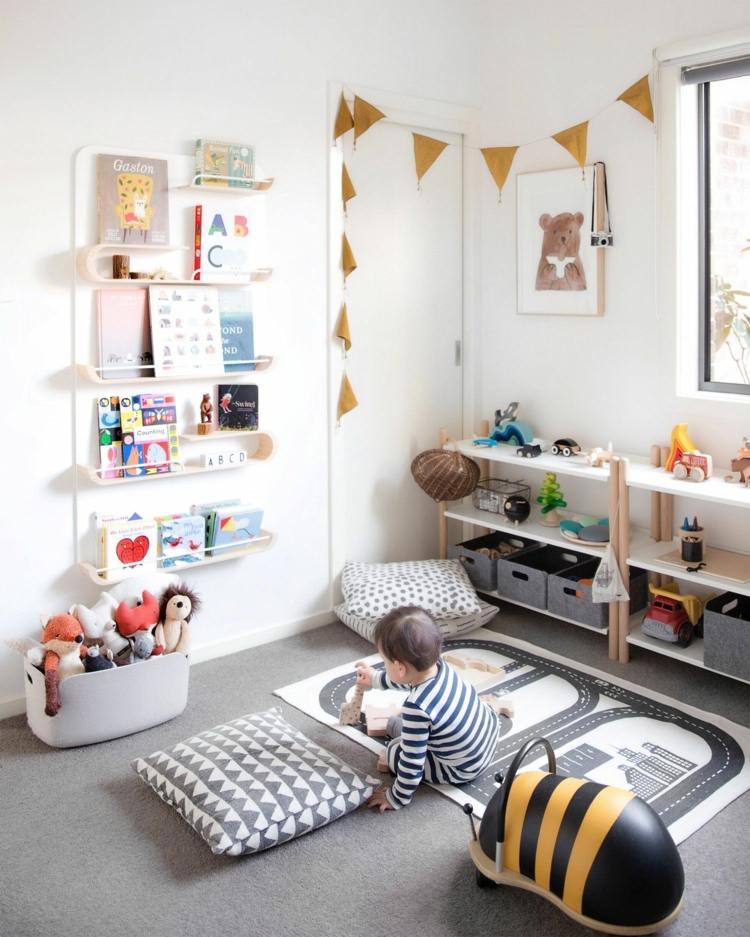
Note: If you want to teach your children independence using the methods mentioned, you should not forget that this also takes time. Don’t put pressure on things and always be there if things don’t work out the way they should. After all, we adults also have to learn everything new first. So how should it be different for children? The path to independence should be fun for the little ones and not forced upon them. Also, don’t forget that the ideas for the Maria Montessori children’s room are merely suggestions and examples and that not all of the tips necessarily have to be implemented. Just see what suits you and, above all, your child best.
